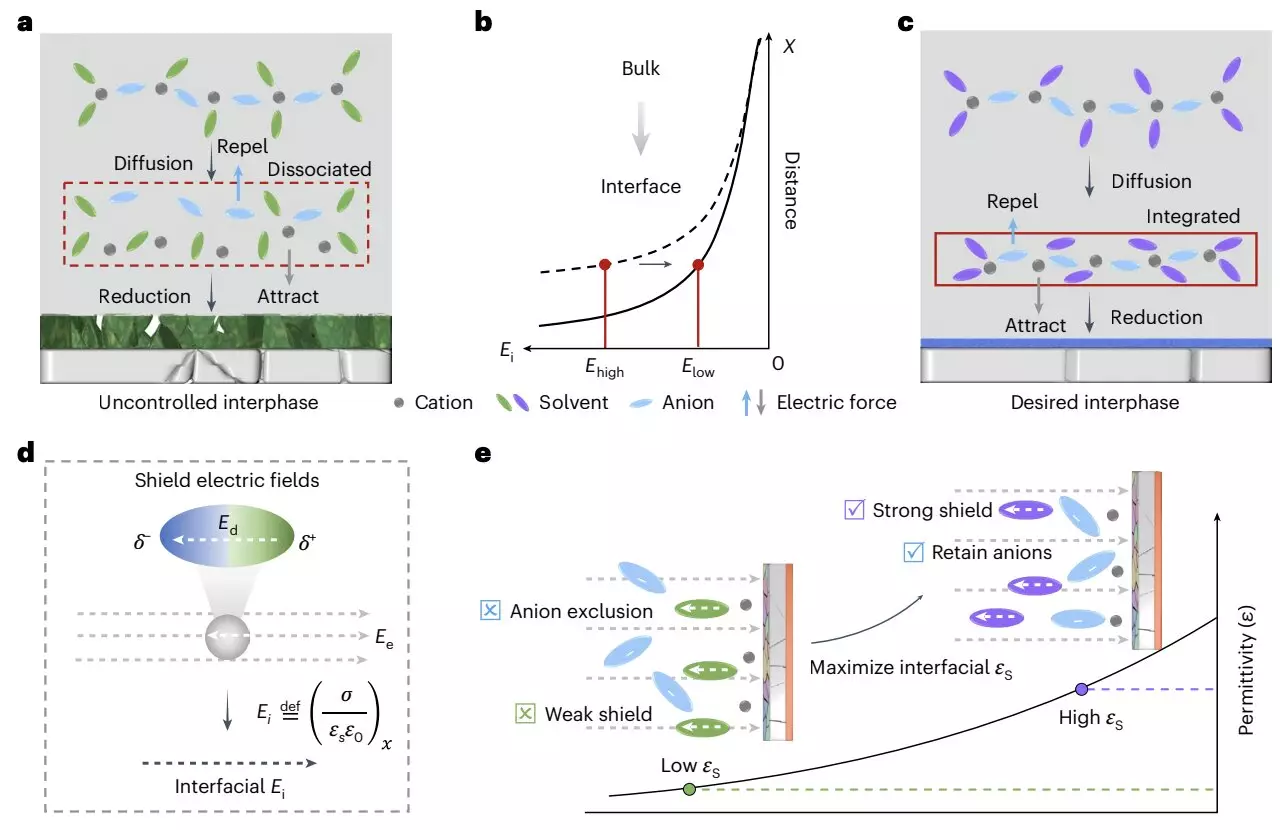In the rapidly evolving landscape of battery technology, the interface between electrodes and electrolytes plays a critical role in determining a battery’s efficiency and performance. This intersection is especially pivotal for rechargeable batteries, with lithium-metal batteries (LMBs) emerging as a groundbreaking alternative to conventional lithium-ion batteries (LiBs). The core advantage of LMBs lies in their use of lithium metal for anodes, presenting the potential for significantly higher energy densities and faster recharging capabilities. However, despite their promising attributes, LMBs face several formidable challenges that hinder their practical application.
Commodity challenges abound for LMBs, the foremost being the high manufacturing costs associated with these batteries compared to their graphite-based counterparts. High initial investments, alongside low Coulombic efficiency—an indicator of how effectively a battery can convert stored energy into usable energy—complicate their commercial viability. The formation of lithium dendrites during charging cycles stands out as a particularly critical concern. These spiky structures develop on the anode surface, leading to unsafe conditions, such as overheating or even fires, thus compromising both the safety and longevity of the battery. To counteract these challenges, researchers have recognized the need for innovative approaches focused on enhancing the electrode/electrolyte interface.
Recent studies have begun to delve into the optimization of the dielectric environments within LMBs, a concept that has previously received limited attention but holds promise for stabilizing electrode/electrolyte interfaces. Researchers from Zhejiang University and collaborators have embarked on this investigation, seeking to transform how we approach the design of electrolytes used in LMBs. Their findings, articulated in a paper published in Nature Energy, highlight a novel dielectric protocol aimed at stabilizing this crucial interface by managing the effects of electric fields within batteries.
The interplay between electric fields and the arrangement of cation-anion pairs in electrolytes becomes essential for developing stable LMBs. By choosing dielectric materials that can modulate interfacial electric fields, the research team proposes a method to safeguard the coordination of cation-anion pairs. Utilizing high-dielectric constant solvents can prevent the dissociation of these pairs under the influence of electric fields, forming a unique anion-rich zone at the interface. This targeted approach prioritizes anion decomposition—crucial for establishing a solid-electrolyte interphase (SEI)—thereby augmenting the reliability and efficiency of lithium deposits within the batters.
The researchers successfully synthesized an ultra-lean electrolyte specifically for their lithium-metal pouch cells, yielding an impressive energy density of 500 Wh/kg. This achievement underscores the impact that dielectric properties can have on regulating the spatial arrangement of anions and cations at the electrode-electrolyte interface. By tailoring electrolyte compositions, the interface’s characteristics can be adjusted to optimize battery performance, making this an exciting avenue for future research and applications.
With the growing demand for energy storage solutions, especially in the electric vehicle sector, there is an urgency to upscale battery technology while ensuring safety and reliability. The dielectric protocol introduced by the research team stands to inspire future investigations across various laboratories, leading to the development of similarly innovative electrolytes for LMBs. However, it is crucial to note that high energy density in LMBs must be approached cautiously, considering the inherent safety risks such as fires and explosions associated with lithium-metal technology.
The advancements presented by researchers at Zhejiang University signify a meaningful contribution to the field of battery technology, particularly regarding lithium-metal batteries. By focusing on the dielectric effects within batteries and their implications for electrode/electrolyte interfaces, this research opens fresh avenues for creating safer and higher-capacity energy storage solutions. As the demand for cleaner energy alternatives intensifies, integrating sophisticated marketing research with practical battery design may prove crucial in overcoming the limitations of current systems and meeting the needs of a sustainable future.


Leave a Reply